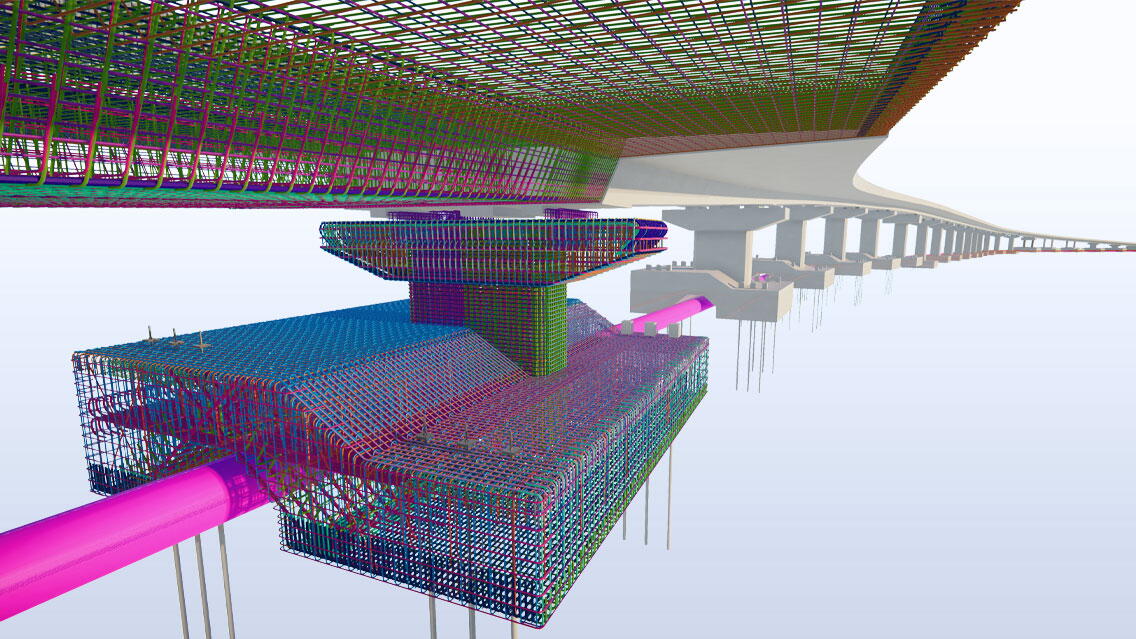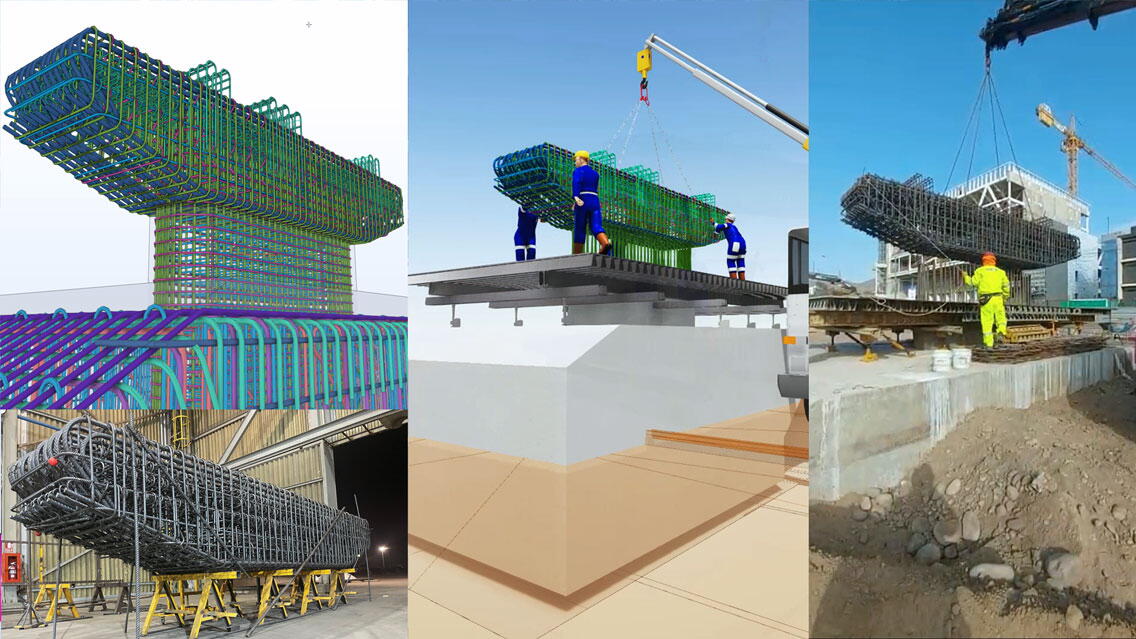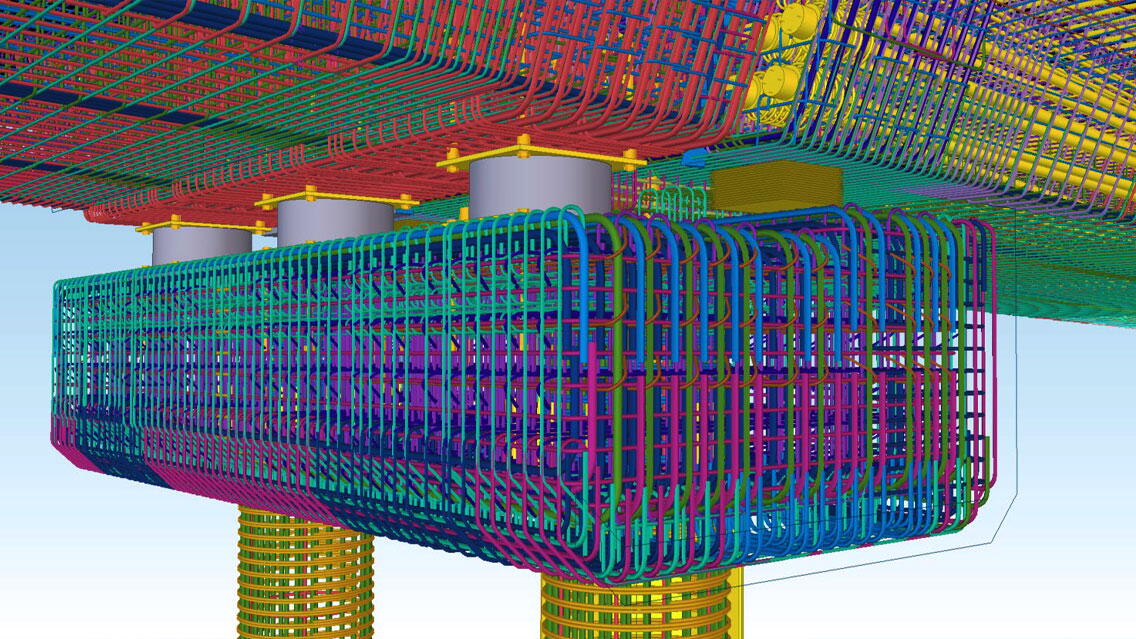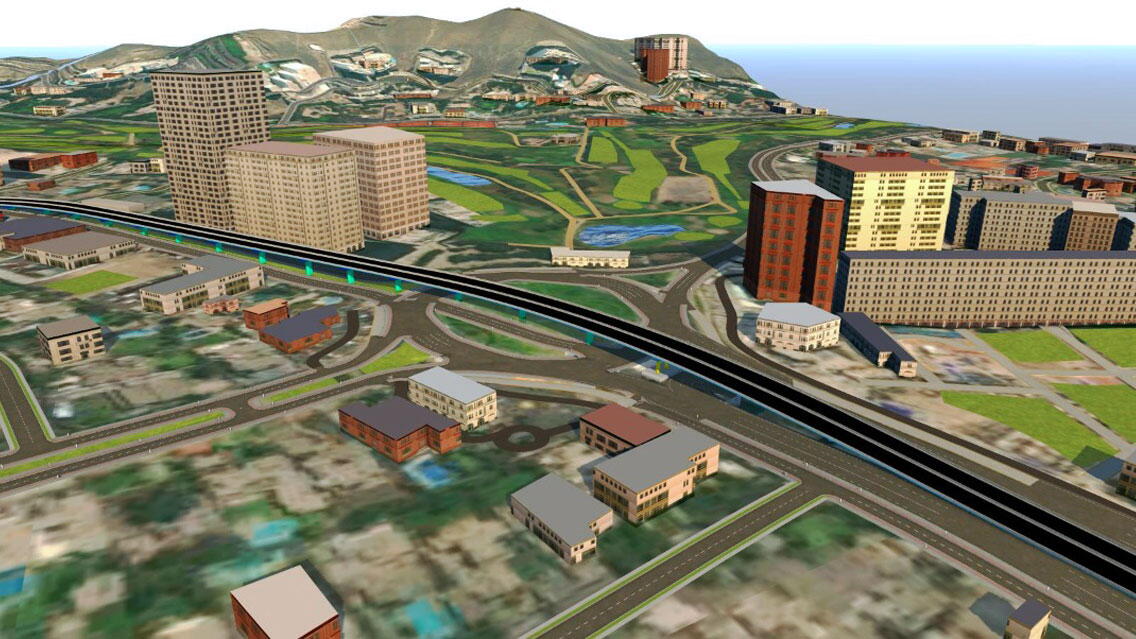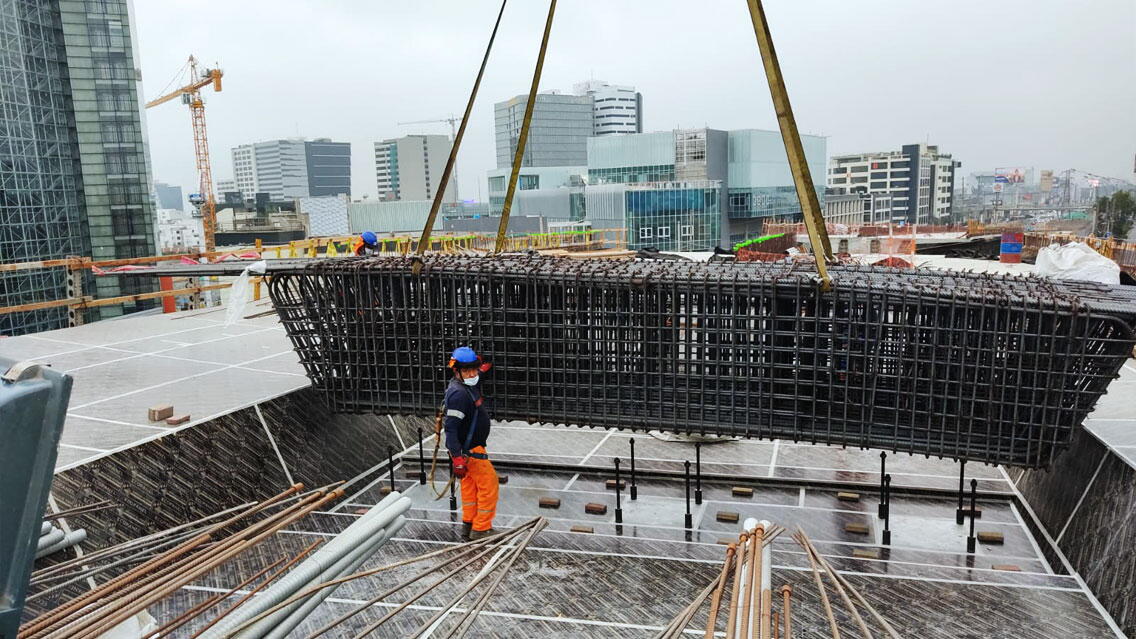The Ovalo Monitor project has a projected length of approximately 2.2 km and includes an overpass consisting of an 870-meter-long reinforced concrete vehicular bridge. It has a complex road design configuration with straight and curved sections. The bridge substructure is composed of two abutments and 21 piers; the superstructure is a continuous box-section deck of post-tensioned concrete.
With a budget of more than S/80 million, this infrastructure built by the Municipality of Lima, through Emape, connects two busy districts in the capital and aims to improve trafficability by reducing the vehicular load by 85%, improve the urban image and benefit more than 500,000 citizens in the area.
BIM for Production
TSC Innovation has been developing detailed engineering according to the Virtual Design and Construction (VDC) methodology. Under this approach, we integrate the designer and builder in the early stages to define the objectives to be achieved through the industrialization of reinforcement. VDC allows quantifying the benefits of modifying traditional processes to lean and production physics-based processes where costs, inventories, capacities, and work in process are optimized using innovative technologies such as BIM and cloud connectivity. TSC Innovation has developed this methodology together with Aceros Arequipa for the greatest number of bridge projects in Peru. The main software used for the detailing of bridges is Tekla Structures, through which the BIM detailed engineering of the project was developed at the production level in the Ovalo Monitor Bridge.
Given the particular and complex geometric configuration of the bridge, it was very important to generate a parametric model through BIM automation via Tekla-Grasshopper to optimize modeling time and obtain flexibility for possible future changes. A first version was modeled according to the design information (technical file) to identify queries and opportunities for improvement. During construction, interferences were identified in the foundations with the water and sewage pipes in the area, so it was necessary to make design modifications that were defined with the help of the model. On the other hand, the model was constantly updated according to information from suppliers (steel, formwork, post-tensioning, seismic isolators, joints, etc.) to develop a compatible and constructible model.
The model was developed by a design team located in different locations, for which using the Tekla Model Sharing tool was essential. At the same time, to generate a collaborative environment and facilitate the dynamic participation of those involved, the Trimble Connect common data environment was used. This versatile platform allowed visualizing and managing the entire project: topography, control points, road design, structures, etc. The model effectively helped to identify interferences and incompatibilities, evaluate possible pre-assembled structures, perform various construction optimization analyses on each component of the project (footing, columns, header beam, diaphragms, deck, etc.), and plan the work using 4D BIM and directly obtain the documentation for construction.
The total reinforcing steel for the project was 2250tn, and the level of development required was LOD 400, which allowed the generation of cutting and bending lists of bars for the automated fabrication of dimensioned/pre-assembled steel by the supplier Aceros Arequipa. In turn, the BIM elements have attributes that allow better monitoring and control of the project online, ensuring traceability of information during the different processes of the supply chain. This helped stakeholders to validate structures in advance, perform quality control in the pre-assembly workshop through augmented reality, facilitate logistics in transportation, and better understand what was to be assembled on site.
